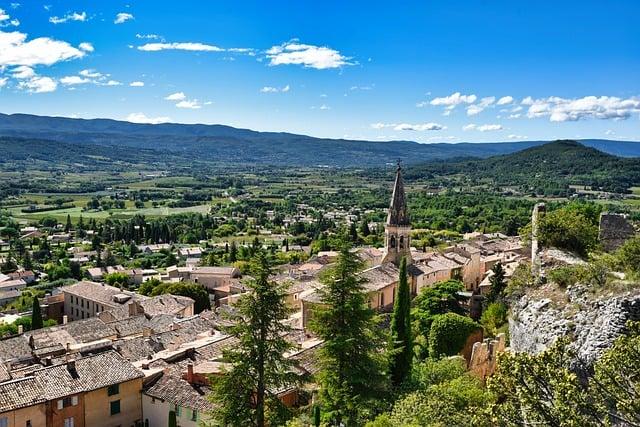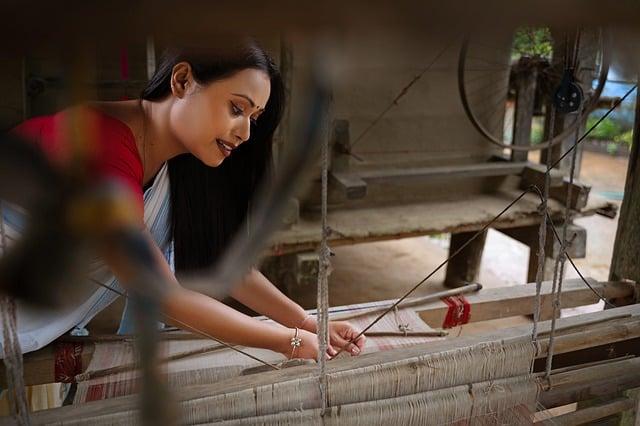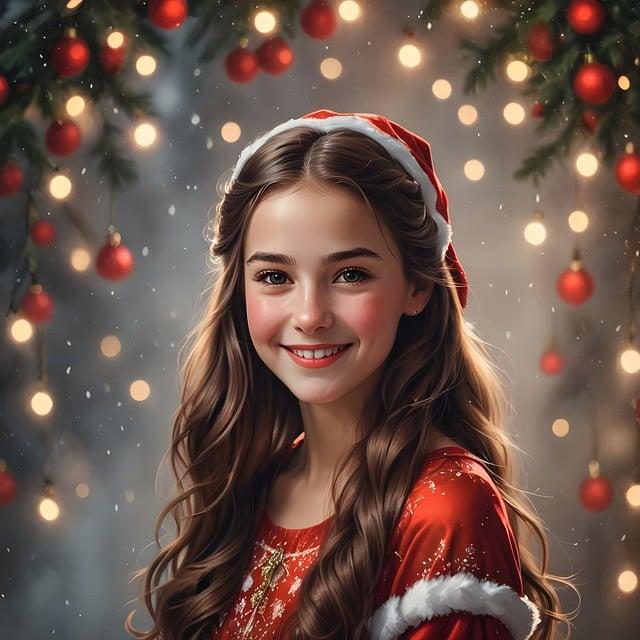Once upon a time in ancient Rome, the winter solstice brought a festival called Saturnalia, where people decorated their homes with greenery to celebrate the return of light. As Christianity spread, these vibrant traditions merged with the celebration of Christ’s birth. In the Middle Ages, evergreen boughs adorned churches and homes, symbolizing eternal life. Over centuries, this evolved into the Christmas decorations we know today—twinkling lights, ornaments, and garlands—each a reminder of hope and joy during the darkest days of winter.
Table of Contents
- The Historical Roots of Christmas Decorations
- Cultural Influences Shaping Festive Traditions
- The Evolution of Decorative Practices Through the Ages
- Tips for Creating Meaningful Holiday Decor at Home
- Q&A

The Historical Roots of Christmas Decorations
The tradition of adorning homes and public spaces during the festive season has deep historical roots that intertwine with various cultural practices. In ancient times, people celebrated the winter solstice, a moment when the days began to lengthen, symbolizing the return of light. To honor this transition, they would decorate their homes with **evergreen boughs**, which represented eternal life. These early decorations were not merely aesthetic; they were imbued with **spiritual significance**, believed to ward off evil spirits and bring good fortune for the coming year. As Christianity spread across Europe, many of these pagan customs were absorbed into the celebration of Christmas, creating a rich tapestry of traditions that would evolve over centuries.
By the Middle Ages, the use of **nativity scenes** and **wreaths** became popular, reflecting the growing emphasis on the religious aspects of the holiday. The introduction of the Christmas tree in Germany during the 16th century marked a significant turning point in decoration practices. Families began to adorn their trees with **candles**, **fruits**, and **handcrafted ornaments**, symbolizing the light of Christ and the bounty of the season. As these customs spread across Europe and eventually to America, they transformed into the vibrant and diverse array of decorations we see today, from twinkling lights to elaborate displays, each carrying echoes of the past while celebrating the joy and warmth of the holiday season.

Cultural Influences Shaping Festive Traditions
Throughout history, various cultures have contributed to the rich tapestry of festive traditions, particularly during the Christmas season. The practice of decorating homes and public spaces can be traced back to ancient rituals that celebrated the winter solstice. For instance, the use of evergreen plants, such as holly and ivy, symbolized eternal life and resilience against the harshness of winter. These elements were often incorporated into celebrations by the Romans during Saturnalia, a festival honoring the god Saturn, where merriment and feasting were paramount. As Christianity spread, many of these customs were adapted and integrated into the celebration of Christmas, creating a unique blend of pagan and Christian practices.
In addition to ancient customs, regional influences have also played a significant role in shaping how we decorate for the holidays. Different cultures have their own distinctive styles and symbols that reflect their heritage and beliefs. For example:
- Germany: The tradition of the Christmas tree originated here, with families adorning their trees with candles and ornaments, a practice that has since spread worldwide.
- Mexico: The vibrant colors of piñatas and papel picado add a festive flair to celebrations, showcasing the importance of community and joy.
- Italy: The nativity scene, or presepe, is a beloved decoration that emphasizes the religious significance of Christmas, often featuring intricate details and local craftsmanship.
These diverse influences not only enrich the festive atmosphere but also foster a sense of connection and continuity across generations, reminding us of the shared human experience during this special time of year.

The Evolution of Decorative Practices Through the Ages
Throughout history, the act of decorating during festive seasons has transformed significantly, reflecting cultural shifts and societal values. In ancient times, people adorned their homes with natural elements, such as evergreen branches and holly, to symbolize life and resilience during the harsh winter months. These practices were often rooted in pagan traditions, where the use of greenery was believed to ward off evil spirits and bring good fortune. As Christianity spread, many of these customs were absorbed into the celebration of Christmas, evolving into a rich tapestry of decorative practices that blended old and new beliefs.
As the centuries progressed, the materials and methods of decoration became more elaborate and diverse. The introduction of glass ornaments in the 19th century marked a significant turning point, allowing for a wider array of colors and designs. Today, Christmas decorations encompass a variety of styles and themes, influenced by global cultures and modern aesthetics. Some popular elements include:
- Twinkling lights that symbolize hope and joy
- Handcrafted ornaments that reflect personal stories and traditions
- Themed decorations that cater to contemporary tastes and trends
This evolution not only showcases the creativity of different eras but also highlights the enduring human desire to celebrate and connect with one another during the festive season.

Tips for Creating Meaningful Holiday Decor at Home
Creating a warm and inviting atmosphere during the holiday season can be achieved through thoughtful decor choices that resonate with your personal style. Start by selecting a color palette that reflects the spirit of the season while complementing your home’s existing decor. Consider using **natural elements** such as pinecones, holly, and evergreen branches to bring a touch of the outdoors inside. Incorporating **handmade ornaments** or family heirlooms can add a layer of nostalgia and significance to your decorations, making them more than just seasonal embellishments.
Lighting plays a crucial role in setting the mood for your holiday decor. Use **string lights** to create a cozy ambiance, draping them over mantels, around windows, or along staircases. Candles, whether real or LED, can enhance the warmth of your space and provide a soft glow that invites relaxation. Additionally, consider creating themed vignettes throughout your home, such as a festive table centerpiece or a cozy reading nook adorned with seasonal accents. By thoughtfully curating your decorations, you can transform your home into a sanctuary of holiday cheer that reflects your unique personality and traditions.
Q&A
-
What is the historical origin of Christmas decorations?
Christmas decorations have roots in ancient pagan traditions, where greenery like holly and ivy symbolized life during the winter months. The practice evolved with the spread of Christianity, incorporating elements like the Christmas tree, which became popular in Germany in the 16th century.
-
Why do we use Christmas trees?
The Christmas tree tradition is believed to have originated from the use of evergreen trees to symbolize eternal life. The custom of decorating trees with lights and ornaments became widespread in the 19th century, representing joy and celebration during the festive season.
-
What do the colors of Christmas decorations signify?
Christmas decorations often feature specific colors that hold symbolic meanings:
- Red represents the blood of Christ and the joy of the season.
- Green symbolizes eternal life and hope.
- Gold signifies wealth and royalty, reflecting the gifts given to Jesus.
-
How have Christmas decorations evolved over time?
Christmas decorations have transformed significantly, from simple natural elements to elaborate displays. The introduction of electric lights in the 20th century revolutionized decoration styles, leading to the vibrant and diverse decorations we see today, including themed ornaments and outdoor displays.
As we wrap up our exploration of Christmas decorations, it’s clear that their origins are as rich and varied as the traditions themselves. From ancient rituals to modern festivities, these adornments continue to bring joy and warmth to our celebrations.

大家好,我是彼得潘,專業的手法身體治療師。我喜歡探索和研究各種主題,並透過與人工智慧的合作分享專業、實用、有趣的文章。我們定期進行人工審核,以確保內容的準確性。如果您發現文章中有任何不準確的地方,請隨時與我們聯繫,我們會及時糾正。您可以透過 [email protected] 與我們聯繫。



